Introduction by Ryley Ruben Pogensky
The first two months of this year have highlighted an epidemic in our country that shows no signs of slowing down. Not only are QPTOC voices being smothered, they are being silenced forever. We need to talk about race, we must talk about oppression, and we must end transphobia. POC voices can not be left behind in that battle, while white LGBTQ people continue to assimilate into straight cis society and gain the media spotlight. Here are four powerful voices – two POC and two white – continuing the conversation:
ANTHONY ZOSHERAFATAIN
As a trans-man of color, I often find myself at a crossroads: Do I neglect my ethnic background in favor of my trans identity? I often find myself fighting for a space in the community as a middle eastern, hairy, feminist, artistic, and anti-norm trans man. I don’t see myself in the mainstream media, and more importantly, I don’t see myself represented in my own community. I have held onto the prospect of hope and progress towards full inclusion of underprivileged trans men in the media, but two recent images from my community that went viral reinforced my gut feeling: white, able-bodied, heterosexual trans men with toned physiques are the only ones deemed worthy of media attention.
Most recently, this has been evident with two images of white trans men that spread like wildfire. I’m sure they have had their own struggles worth covering, but it must be acknowledged that it has come at the expense of displacing underprivileged trans men from feeling represented. One of these images featured a comparison between a trans man and Adam Levine:
 via Ego City
via Ego City
The other photo was featured in an article about a trans man whose girlfriend “never knew her hunky boyfriend was born female”:
 via Mirror
via Mirror
Many in the trans male community instantly applauded both images, which is understandable given the relative lack of trans masculine representation in the media. It became evident, however, that this response was connected to how the media treated such images. The media was quick to give its approval to these trans men because they conform to traditional standards about what the “ideal male body” should look like. Our own community reinforces this, by concentrating on proving that our bodies are “attractive” rather than challenging normative ideas about gender, masculinity, and beauty.
I know that some trans men want to be stealth and attain such physiques, but when it repeatedly excludes trans men who are of color, disabled, genderqueer, not heterosexual, not toned, and who don’t want to or can’t medically transition from being represented, then it becomes problematic. As trans men, we may be pawns in a larger system that doesn’t yet deem most of our bodies worthy, yet when similar images in our community have become viral, it can’t be denied that we are not doing a good job of prioritizing underprivileged voices in our own community. We must change this. It won’t get better, until we do better.
 About the contributor: Tony Zosherafatain is a 27 year old Iranian and Greek FTM. He is the Director and Producer of I am the T: an FTM documentary, a film about a diverse group of trans men around the world. Tony is also a student at New York University, where he is studying to become a nurse practitioner focusing on trans-inclusive endocrinology.
About the contributor: Tony Zosherafatain is a 27 year old Iranian and Greek FTM. He is the Director and Producer of I am the T: an FTM documentary, a film about a diverse group of trans men around the world. Tony is also a student at New York University, where he is studying to become a nurse practitioner focusing on trans-inclusive endocrinology.
CIANAN RUSSELL
When I read Ryley’s piece in Qwear, my first thought was, “I need to listen to this to become the kind of man I want to be.” My second thought was, “I need to listen to this to keep myself from becoming the kind of man I never want to be.” It’s a callout that white transmen need to hear: because of our white privilege, our voices are over-represented and over-valued in the popular transmasculine narrative. We get the cover photos, the “so-hot-you-won’t-believe-he-used-to-be-a-woman” articles, the television interviews and column space. Ryley called this out clearly and directly, and the predictably disappointing response from white transmen was shotgun denialism.
White transmen are in a unique position; We have done the impossible in moving through transition into the most privileged social position – white and male. But in doing so, it appears that many of us have forgotten how oppression works. We engage in counterpoint arguments with trans people of color and white transwomen, insisting that our voices need more space and that they should make it for us. While it is absolutely true that transmasculine voices need more attention on a grand scale, looking at the current landscape, all I can see are white transmen taking up the little space we do have. This issue is difficult because the amount of exposure and visibility that we do get as transmen is already woefully inadequate. However, white supremacy and racism allow for white transmen to completely dominate the dialogue, and so long as we are complacent about this discrepancy, it will continue.
This discrepancy is a problem because not all transmen are white. Transmasculine POC exist, even though the media does not see them. And as transmen, we have a responsibility to the young Black and brown boys who were assigned female at birth, just like us. They struggle with dysphoria, sexuality, sexism, and transphobia, just like us. They search for images of themselves, struggling to find their place, just like us. They have been drug out of bathrooms, beaten, harassed, and raped, just like us. With our newfound privilege, when we ignore the lives of Black and brown boys, we become just more white men yelling “You are not a man.”
When the only models for transmasculinity they can find do not look like them, we leave these boys behind. When conversations end with white men telling someone to be quiet, we leave these boys behind. When we say “we are all trans; race shouldn’t matter”, we leave these boys behind. I do not accept that. I have survived these 14 years in transition because a community insisted that my life had value when I was hopeless. I won’t stand by while my community tells Black and brown transmen the opposite.
 About the contributor: Cianán is a lapsed PhD chemist, writer, public speaker, trainer, activist, and assessment expert whose interests in activism are transmasculine representation in global trans activism and development of the public concept of trans folks as complete people with lives, identities, and desires beyond simply being trans. As a gay trans man, his personal interests also include expanding the visibility of the variety of trans folks, prevention and treatment of sexual violence and rape amongst trans survivors, and sexual and reproductive health services for gay and queer trans men. Cianán has founded and worked with numerous local, national, and international trans rights organizations, writes a blog at transience-inside.blogspot.com, and lives in Bangkok with his partner.
About the contributor: Cianán is a lapsed PhD chemist, writer, public speaker, trainer, activist, and assessment expert whose interests in activism are transmasculine representation in global trans activism and development of the public concept of trans folks as complete people with lives, identities, and desires beyond simply being trans. As a gay trans man, his personal interests also include expanding the visibility of the variety of trans folks, prevention and treatment of sexual violence and rape amongst trans survivors, and sexual and reproductive health services for gay and queer trans men. Cianán has founded and worked with numerous local, national, and international trans rights organizations, writes a blog at transience-inside.blogspot.com, and lives in Bangkok with his partner.
DEVIN NORELLE
NY Fashion week has come to a close and it made me think a little this week. What comes to mind when you think of high fashion? Do you imagine tall, slender models walking the runway clad in outfits that are not likely to be worn by the general public? Do you imagine these men and women as some of the most attractive and desirable people in the world? I’m sure you do. Now take a moment to think very seriously about my next question. What are the races of these models you initially imagined? I’ll take a good guess; they are most likely white. And if they were of other races, than kudos to you! Let’s face it, runways are predominantly white. Racism runs rampant in the fashion industry as black models are less visible on the runway. Black models are rarely hired, and often they are turned away when a company has met their one black person quota per show. In 2013, the fashion powerhouse Dior hired black models for a show for the first time under Raf Simons’ lead. (The shows were racially diverse prior to Simons.) The consistent racism suggests that the fashion industry, has deemed white people beautiful and attractive, while black people are seen as less than desirable.
Decades of racism conveyed by the fashion industry and the media has trickled down into every level of society. The queer community has also succumbed to the whitewashing. I currently run a fashion account on instagram (@TransMensFashion) as a safe space for those in FTM community who’d like to showcase their dapper threads. After transmen or other trans-masculine individuals submit their photos to me, I repost their photos onto my account. Some weeks after I created TransMensFashion, I eventually began to notice a disappointing trend. White men were more likely to receive “likes” and compliments than black men or other men of color. This was incredibly puzzling to me, especially since some of the best dressed men on my feed were black men, including my friend Dezjorn, a model for Barney’s Brothers and Sisters Campaign.
Not surprisingly, this trend isn’t limited to my account. There are now numerous Instagram feeds highlighting proud transgender men including Transandproud, toplesstransmen ftmsogig, barbellsandftms. Nonetheless, whitewashing continues to persist. Transmen of color do not receive as much attention, are not complimented as often, or are overlooked entirely. If an individual is not a passing, white male, and does not successfully resemble a white, cisgender male, then most of the trans* community ignores said individual.
Recently, a photo comparison of transman Aydian Dowling and singer Adam Levine went viral (see above). Aydian received praise from many in the trans* community for how well he passed, and for appearing to be a better looking man than Adam. While I do believe Aydian looks pretty amazing, I disagree with the message behind the picture. The comparison praises white bodies, the gender binary, and reinforces heteronormativity. When transmen are portrayed in the media (by either a trans writer or cis author), the male examples are almost white.
In a nation where black, female bodied individuals are among some of the poorest, and black transmen have less access to financial or medical resources necessary for a transition, the lack of TPOC visibility is troubling. It’s even more disconcerting that our community continuously contributes to this invisibility via Transmale specific magazines, blogs, or Instagram/Tumblr accounts. Trans men of color do exist. Our community needs to make a better effort in making sure the TPOCs are given the exposure and shown the same amount of respect as our white comrades so as to better represent our community.
 About the contributor: Devin-Norelle is a native New Yorker by way of Harlem. Ze has been featured on DapperQ’s 100 Most Stylish dapperQs of 2014. Ze runs the instagram page TransMensFashion as a safe space for dapper Transmen and Transmasculine individuals. Ze also blogs about zis transition and about the social implications of being an androgynous TPOC at TransparentGender.
About the contributor: Devin-Norelle is a native New Yorker by way of Harlem. Ze has been featured on DapperQ’s 100 Most Stylish dapperQs of 2014. Ze runs the instagram page TransMensFashion as a safe space for dapper Transmen and Transmasculine individuals. Ze also blogs about zis transition and about the social implications of being an androgynous TPOC at TransparentGender.
SAM LEON
As several friends of mine in more qualified positions than me to speak on race relations have pointed out, the entire scope of trans-masculine visibility in America — from the prominent trans-male culture magazines, to “who gets featured” on viral Buzz-feed listicles, to the trans men they profile from women’s colleges in the New York Times Magazine — is white, white, white. Why this has come to be should be no surprise to anyone who is even a casual observer of race relations in the United States, and I cannot make it the job of this article to break down to you that we do, in fact, live in a structurally reinforced racist society. This is a foregone conclusion, and if you’re not on board with this, I’m just going to tell you that you haven’t been paying attention and you need to read the news more often. The problematic aspect of “all-white everything” in our trans-masculine culture lies in the fact that we, as white trans men, are actually in a position of great visibility and power due to a culture that values white men above everyone else. “With great power comes great responsibility,” says our favorite 17th-century author Voltaire, and as such, we have a responsibility not to let down our P.O.C. brothers-sisters-and-kinfolk who are in more vulnerable positions than ourselves.
“Why must I do this,” you ask. “Why should this cross fall to me when I too have experienced hardship? I too, have been misgendered, hated by family members, experienced mental health issues, and otherwise encountered difficult situations that put my life at risk? Why can’t everything just be about me now that I’m working on (or have completed) my transition?” The answer, quite simply, is that the group of people I’m asking you to pay attention to, are systematically and constantly at a larger risk than you are. For every misgendering you’ve had, a trans man of color that you don’t even know has been misgendered and then stopped and frisked by a police officer. For every time you’ve felt invisible, lost in society, a trans woman has been murdered by her partner or by a group of passers-by, drunk and egging each other on in the streets. If you’ve experienced homelessness, so have they — in spades. If you’ve been broke, they’ve been broke and unable to fund their transitions through public campaigns in a culture that pretty much refuses to discuss or portray black trans* lives. In short, there is pretty much no aspect of a transwoman or trans person of color’s life that has been any easier than yours, and many aspects that have been — and always will be — harder.
Now I recognize that “white trans men” are not some monolithic group that have all medically transitioned, are all passing perfectly, and are all living an ideal life surrounded by friends, family, and a partner or partners. But DON’T LIE — some of you are that person, and if you are, I’m *especially* talking to you. So I’m going to take this opportunity to shame, corral, or otherwise convince you that BLACK (and POC) TRANS LIVES and TRANS WOMEN’S LIVES MATTER. All I ask is that the next time cis culture rewards you for being exactly who you are, please remember these forgotten members of your community, and try to dream up ways to uplift them and share their voices and stories with the world. This is called giving back, and it costs nothing except your time, and your ability to listen and learn.
 About the contributor: Sam is an accounting student and CPA candidate who is passionate about issues of race, gender, and class in America. His hobbies include reading long-form articles, ranting about things on the Internet, discovering new music, and recently, home-brewing beer.
About the contributor: Sam is an accounting student and CPA candidate who is passionate about issues of race, gender, and class in America. His hobbies include reading long-form articles, ranting about things on the Internet, discovering new music, and recently, home-brewing beer.
*dapperQ’s Community Voices is a platform for and by the community to share stories, opinions, and essays. We embrace diverse points-of-view and welcome you to join the discussion in the comments section below, on Twitter, or by pitching your own pieces for publication via [email protected]
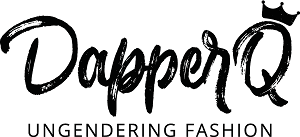
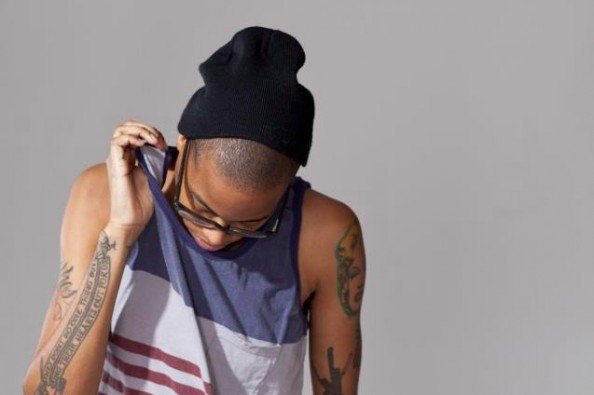
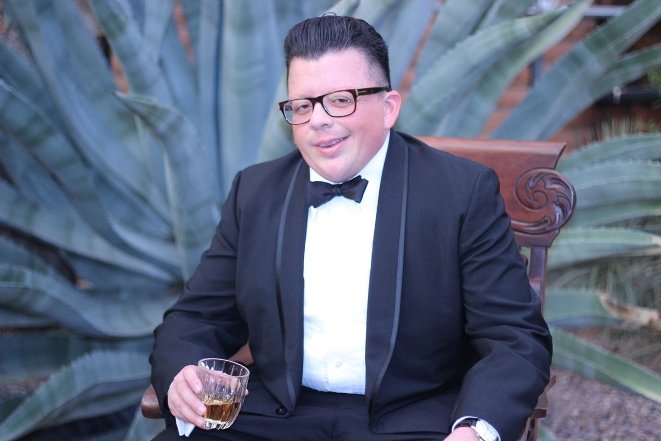
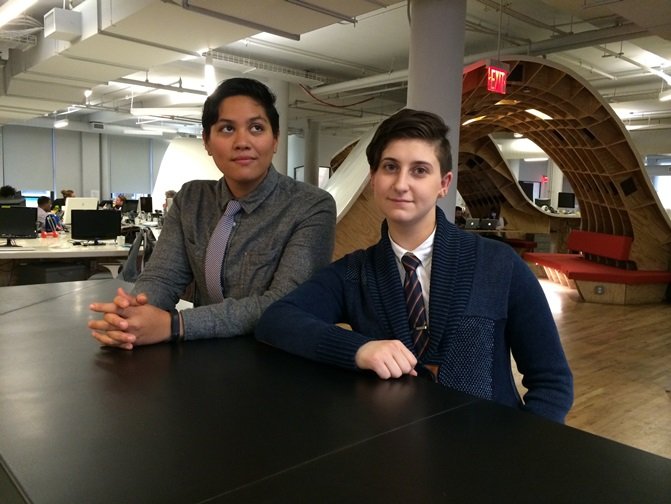

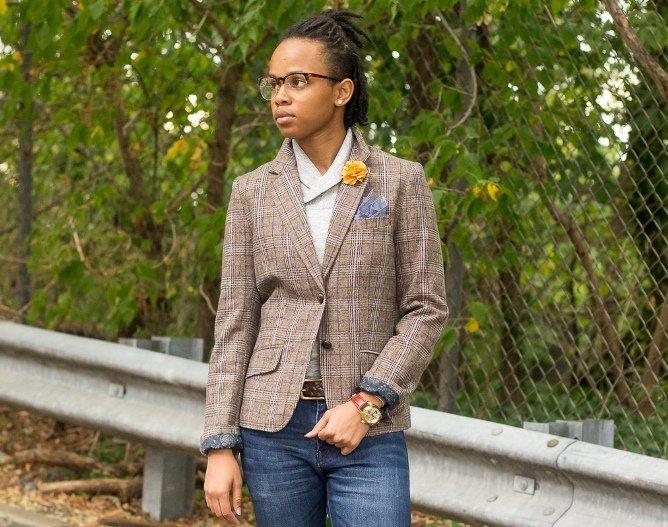
I found all if the perspectives very interesting, but what I like most about this page is the way in which multiple perspectives are shown. Too often we are only shown a single point of view and often without any recognition of the alternatives. Options are important but at awareness of the wider context of their existence allows readers to read them critically.